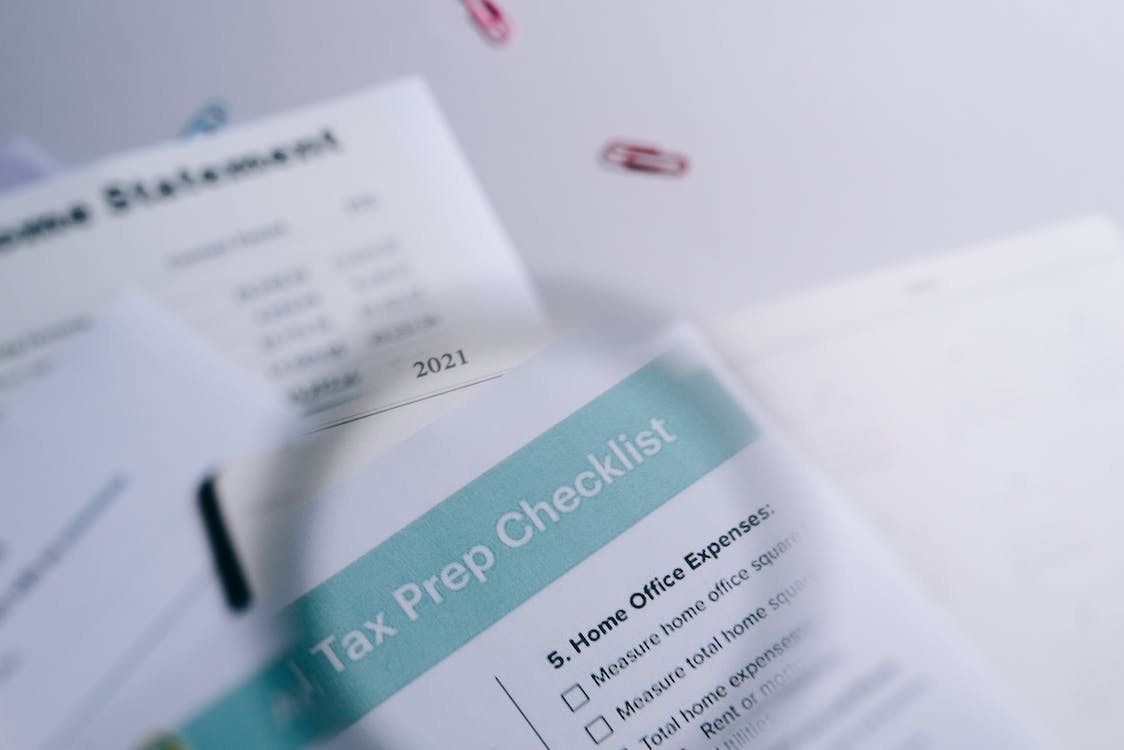Dropshipping Tax: The Complete Guide

If you want to get into retail eCommerce without the hassle of managing inventory, dropshipping is the way to go.
As a dropshipper, you can start a retail business with very little capital investment. As long as you have A-plus suppliers, you can focus on marketing and making sales while other parties handle storage and shipping.
Sounds easy, right?
Well, it’s not so simple. Dropshipping isn’t always an easy gig. One thing that dropshippers often forget about is taxes. You don’t play by the same rules as a brick-and-mortar retail store, and there are tax implications to sourcing products from a supplier and reselling them in the U.S.
The good news is that it’s smooth sailing once you learn how dropshipping taxes work. Check out this complete guide to dropshipping taxes for business owners in the United States.
Types of Tax That Apply to a Dropshipping Business

First of all, yes, dropshippers have to collect taxes.
If you’re a for-profit business, the U.S. government requires you to pay taxes. Dropshipping might be an online business, but you’re earning an income from it, so Uncle Sam wants his cut.
While sales tax might be the first thing that comes to mind, dropshippers actually deal with a variety of different taxes.
Here’s an overview of the four types of taxes you might have to pay as a dropshipper.
Income Tax
With income tax payments, the federal or state government taxes you on the income your business earned. It takes a percentage of your income based on how much you made, which determines the percentage of taxes you pay. The United States has a federal income tax, but most U.S. states also have state income taxes, too.
However, if you’re in these nine states, you don’t have to worry about filing state income taxes on your dropshipping business:
-
Alaska
-
Florida
-
Nevada
-
New Hampshire
-
South Dakota
-
Tennessee
-
Texas
-
Washington
-
Wyoming
The thing is, federal income tax is still a bit of a headache. As a dropshipper, you’ll likely need to file both annually and quarterly. This means you have to pay the IRS several times a year instead of a lump sum all at once.
Quarterly payments aren’t fun, but they spread out the cost of paying taxes throughout the year. If you’re a sole proprietor, you likely need to file quarterly, but you can check the IRS’s requirements to see if that’s necessary.
Sales Tax
Sales tax is a tax you pay to your state or city on every sale you make. More often than not, the end customer pays sales tax on the transaction and then you turn around and pay it to the government.
As the dropshipper, you work as the go-between for manufacturers and shoppers. You don’t have to hold onto inventory, which frees you up to focus on sales and marketing.
That’s good news, but it does affect your sales tax. Because you’re the third party, you have to worry about paying sales tax to your supplier as well as collect sales tax payments from the end customer that you need to remit to the government. To make it even more confusing, sales tax rates differ by state.
The thing is, sales tax is tricky for dropshippers. That’s because all retailers — dropshippers included — have to pay sales tax in a state if they have what’s called a “nexus” in that state. Nexuses can get a little complicated, so we’ll dive into them later in this guide.
Source Tax
Source tax is a tax you pay to your supplier. When a shopper orders something from you, you turn around and place an order with the supplier. In addition to the cost of the materials, the supplier might charge you a source tax as a percentage of the total purchase.
Customs or Duty Taxes
Chances are, your suppliers are shipping products into the U.S. from other countries. The U.S. government taxes imported goods brought in from overseas, so you’ll have to pay customs or duty taxes before officials will release the goods.
Dropshipping: How Much Tax Do You Pay?

You might look over the list of taxes you have to pay and think, “Holy smokes! How much tax do you pay for dropshipping?”
There’s no clear answer because your taxes depend on your location, your customer's location, your income, and if you have a nexus (which we’ll explain in a bit). Even so, here are the average tax rates to give you an idea of what you’ll pay:
-
Income tax: Federal income tax brackets range from 10% to 37% of your income. Nationally, the average percentage is 13.29%. In other words, people fork over 13% of their income to the government every year on average.
-
Sales tax: As of 2022, state sales tax rates range from 0% to 9.47% on every sale. The national average is 6.35%, so you can expect to pay the government around 6% of the value of every sale. However, keep in mind that Delaware, Montana, New Hampshire, and Oregon don’t charge sales tax.
-
Source tax: This depends on your supplier, their location, and the products you purchase. But on average, you can expect to pay a 10% source tax to your supplier. So if you buy a product for $100 from them, the total would be $110 with tax.
-
Customs or duty tax: Customs taxes are as high as 37.5%. But it depends on what the products are and their value. If the U.S. has a Free Trade Agreement (FTA) with the country you’re shipping the goods from, you’ll see a more favorable tax rate. If the shipment is worth less than $800, you might not need to pay tax (but check with customs first to make sure).
Dropshipping: When Do I Need To Charge Sales Tax? When Do I Need To Pay Sales Tax?

Of all of the taxes you’ll pay as a dropshipper, none are more complex than sales tax. But just because it’s complicated doesn’t mean it’s impossible to figure out. To understand whether you need to charge sales tax, you’ll need to determine if you have a nexus.
Figure Out if You Have a Sales Nexus
Forty-five U.S. states charge a sales tax, and all of their sales tax rates are different. Before 2018, you only had to pay sales tax in the state you resided in, but that unfortunately isn’t the case anymore. Today, you may need to pay sales tax in a state that you don’t live in.
States look at whether dropshippers have a nexus in their jurisdiction to determine if you need to pay taxes in that state. A nexus defines the amount of contact you have with shoppers. For example, maybe you live in Arizona, but if you make most of your sales to customers in California, it means California will probably want to tax you.
States determine whether you have a nexus in two ways:
-
Physical presence: If you have a physical presence in another state, like an office building or warehouse, you have a nexus in that state.
-
Economic presence: With the advent of eCommerce dropshipping, states also look at how much money you made selling to their residents in a given year. Every state has its own rules for what constitutes an economic presence, but if you earn over $100,000 in another state each year (or process 200+ transactions), you likely have a nexus. The good news is that you need to make a lot of sales to have an economic presence, so if you’re just starting out, you likely don’t have a nexus.
If you can prove you don’t have a nexus in a particular state, you don’t have to pay sales tax in that state. However, if you sell on platforms like Amazon, eBay, or Shopify, they charge sales tax based on if they have a nexus in a state. So even if you don’t have a physical presence in Oklahoma, Amazon does, so you’ll be on the hook for sales tax that way.
Collect Sales Tax
If you have a nexus, it means you need to pay sales tax. To start collecting sales tax, you need to get a sales tax permit from the state. Every state is different, but you can Google, “[State name] sales tax certificate” to find the process to apply for a permit. You can usually handle the entire process online.
During the permitting process, the state will tell you how to pay taxes and how often you need to file. The good news is that most states have a simple online platform for sales tax, so it’s as easy as logging in and paying according to the state’s schedule.
Keep in mind that, even if you made $0 in sales in a given state, you still have to file tax returns claiming that.
Apply for Dropshipping Sales Tax Exemption Certificates
But what if you don’t want to pay sales tax? As a dropshipper, you could qualify for a tax exemption certificate. Because you resell products, you can apply for an exemption from the Multistate Tax Commission. Keep in mind that this exemption only applies to 36 U.S. states, so this won’t exempt you from sales tax everywhere, but it can certainly lighten the load.
Once you have your exemption in hand, you can turn it over to your supplier. This tells them that they don’t need to charge you sales tax, which is good news for your wallet. The bad news is that exemption certificate fraud is so common that some suppliers won’t accept exemption certificates anymore. If you want to save money, make sure you choose suppliers that accept dropshipping tax-exempt forms before you sign a contract with them.
Collecting Sales Tax With Shopify

If you sell primarily on a platform like Shopify, you don’t have to deal with sales tax by yourself. Shopify’s settings can help you automate the sales tax process and keep it as simple as possible.
Shopify will automatically collect tax on every transaction based on your business’s settings. It can even help you calculate whether you have a nexus in a particular state and help you calculate the right sales tax rate.
Just go to Shopify Settings > Taxes to see if you have a nexus. If you want to adjust your sales tax settings at any time, just go to Settings > Taxes and Duties.
If you want to save even more time, Spark Shipping integrates with Shopify. Let Shopify automate your sales tax while Spark Shipping handles just about everything else.
Sales Tax Compliance Solutions
Of course, platforms like Shopify can only help you so much. Sometimes it’s best to consult a professional, especially concerning your taxes. If you want hands-on help, these U.S. tax professionals specialize in eCommerce and dropshipping:
How to Legally Reduce Your Income Tax as a Dropshipper

Sales tax is the biggest headache for dropshippers, but nobody loves paying income tax, either. While you can take steps to decrease your dropshipping sales tax obligations, it’s tough to reduce your tax liability for income tax. Only tax-exempt entities like churches, museums, and nonprofits are exempt from income tax. You’re running a for-profit business, which means in the U.S., you have to pay income taxes.
So, how can you legally reduce your income tax liability? Well, it comes down to good, old-fashioned business practices like:
-
Funding retirement: Did you know that funding a retirement account can reduce your tax liability? As a sole proprietor, you may be eligible to open a SEP IRA, which is a special retirement fund for self-employed people. You can save for your golden years while reducing your taxable income today, so it’s a win-win.
-
Incorporating: There are a lot of things to consider here, but some dropshippers create an LLC as a way to get tax breaks. If you change the legal structure of your business, you might save on income taxes, but you could be on the hook for other types of costs, so carefully weigh the pros and cons of incorporation.
-
Making qualifying deductions: Certain business expenses can count against your taxable income to help reduce how much income tax you pay. So if you want to invest in a new website or Facebook Ads, you can write off a portion of those costs and reduce taxes in the process. Other common deductions include a home office, marketing, travel, internet, or phone service.
-
Charitable donations: That’s right. You can do good in the world while reducing how much you pay in income taxes. The IRS allows you to write off a portion of donations made to valid 501(c)(3) charities.
Fun fact: if you didn’t make a profit, you likely don’t have to pay income taxes. You still have to file a return telling the IRS that, but they won’t charge you if you didn’t make any money. So if you had a bad loss this year, know that your taxes will probably be more forgiving.
There are a lot of considerations when it comes to paying less in taxes. You don’t want to make a misstep here, so you should work with a tax professional to help you legally pay fewer taxes.
How Spark Shipping Can Help
Dropshipping is an innovative business model with a low barrier to entry. Dropshipping taxes can be a headache, though, so it’s important to understand what you need to pay — or risk the wrath of the IRS.
Once you get the hang of it, dropshipping taxes will become just another cog in the machine that is your dropshipping business. When in doubt, invest in a professional tax advisor that specializes in eCommerce. Together, you can create a plan that helps you stay on the right side of tax laws.
While Spark Shipping can’t help you with your taxes, we can automate several areas of your dropshipping operation to give you even less to worry about. From product management to pricing to fulfillment, Spark Shipping automates your business where it counts. Ready to give us a try? Check out a quick Spark Shipping demo now.
Popular Posts
Posts by Topic
- Dropshipping (10)
- Dropshipping Automation (6)
- Dropship Suppliers (4)
- EDI (3)
- Pricing Strategy (3)
- Amazon Seller Central (2)
- Automotive Dropshipping (2)
- Conversion Rate Optimization (2)
- Dropshipping Products (2)
- Order Management (2)
- Shipping (2)
- Vendor Product Catalog (2)
- AI Dropshipping (1)
- Dean Soto (1)
- Feature Announcement (1)
- Online Empire Academy (1)
- Product Optimization (1)
- Walmart Marketplace (1)
- referral marketing (1)